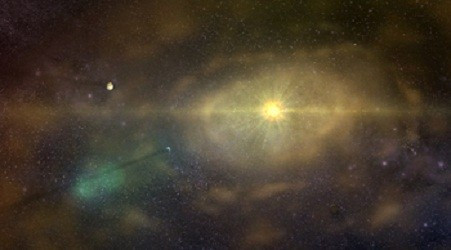Earth-Like Planets Can Be Formed Around Stars That Are Poor In Heavy Metals, Says Nasa

Scientists from Nasa and the University of Copenhagen have found that earth-like planets or small planets can be formed around stars that are relatively poor in heavy elements. They discovered this with the Nasa's Kepler space telescope.
Previously, scientists believed that planets could be formed around a star, only if the star had a high content of heavier elements. But now, they have found that small planets can actually be formed around stars that are poor in heavy elements.
Scientists discovered this when they were studying element composition of more than 150 stars harboring 226 planet candidates.
"I wanted to investigate whether small planets needed a special environment in order to form, like the giant gas planets, which we know preferentially develop in environments with a high content of heavy elements," said Lars A Buchhave, an astrophysicist at the University of Copenhagen, in a statement.
To know whether small planets could be formed around a star that has less heavy metal content, scientists studied all chemical elements heavier than hydrogen and helium as metals. They claimed that stars with a higher fraction of heavy elements than the sun are considered metal-rich. Stars with a lower fraction of heavy elements are considered metal-poor.
The study revealed that stars that are poor in heavy metals could give birth to earth-like planets or small planets. Planets four times the size of earth, like Jupiter can form around stars with a wide range of heavy element content.
Scientists also claim that for a planet to have a high content of heavy elements it has to have gone through a series of rebirths.
A star is a large ball of glowing gas that produces energy by fusing hydrogen and helium into heavier and heavier elements. When the entire core has been converted into iron, no more energy can be extracted and the star dies flinging massive clouds of dust and gas out into space. These large clouds of gas and dust condense and are recycled into new stars and planets in a gigantic cosmic cycle. The new stars that are formed will have a higher content of heavier elements than the previous and for each generation of star formation there are more and more of the heavy elements and metals.
The planets are formed from the remnants of the clouds of gas and dust that rotate in disc around the newly formed star. In this protoplanetary disc, the elements begin to accumulate and clump together and slowly the planets are formed.
"We have analysed the spectroscopic elemental composition of the stars for 226 exoplanets. Most of the planets are small, ie planets corresponding to the solid planets in our solar system or up to four times the earth's radius. What we have discovered is that, unlike the gas giants, the occurrence of smaller planets is not strongly dependent on stars with a high content of heavy elements. Planets that are up to four times the size of earth can form around very different stars - also stars that are poorer in heavy elements," said astrophysicist Buchhave.
Scientists now believe that there are likely to be more earth-like exo-planets because small earth-like planets are not dependent upon a high content of heavy elements in their host star, they could be both widespread and could have been formed earlier in our galaxy.
© Copyright IBTimes 2025. All rights reserved.



















